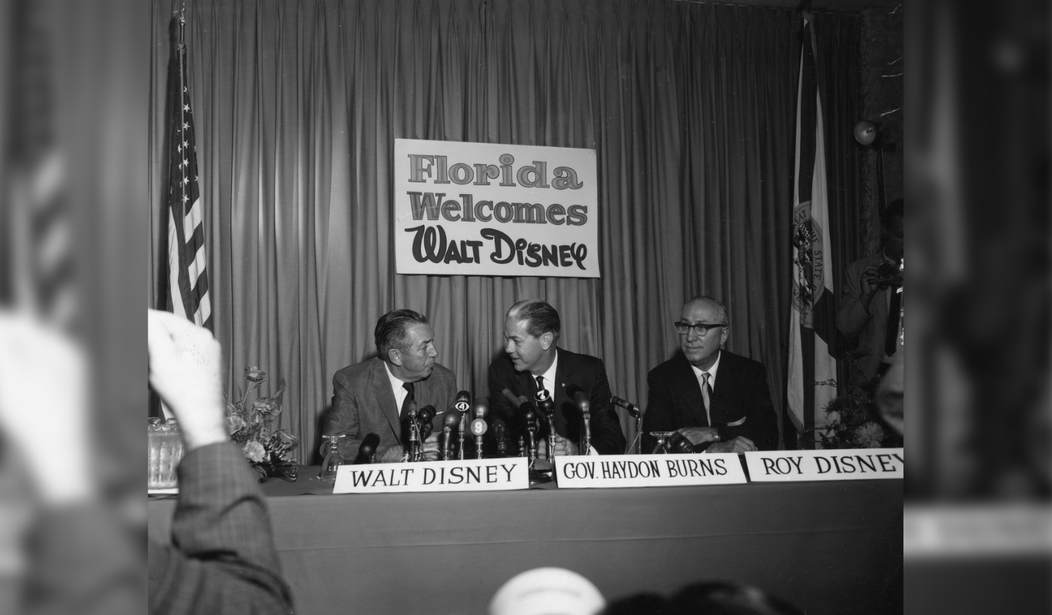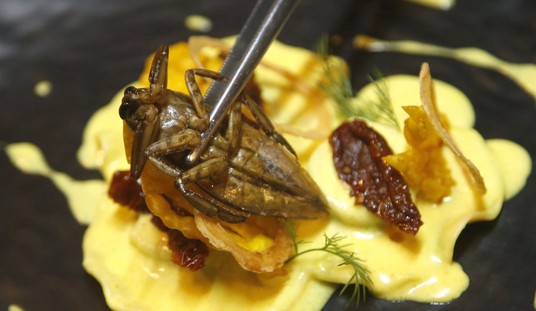Over the last few weeks, I’ve written a lot about Walt Disney. I’ve covered his political journey, his faith, his commitment to excellence, his patriotism, his futuristic vision, and the presence of certain Judeo-Christian values in his films (with more to come in the ensuing weeks). Today I want to emphasize the commitment Walt and his brother Roy held to the free market, remarkable in light of the fact that the brothers grew up in a socialist household.
Roy and Walt’s father Elias had an entrepreneurial streak but he was either unlucky or a terrible businessman. Yet he professed socialist views. Elias tried to impress these ideals on his sons. As I wrote about him recently:
Elias…was a Socialist — in particular, he followed the philosophy of J. A. Wayland. Wayland created a unique strain of Prairie Socialism in the late-19th and early-20th centuries.
[…]
Wayland’s newspaper, Appeal to Reason, “was folksy” and “reached the common man’s ears but irritated the intellectual’s.” Elias Disney subscribed to Appeal to Reason, and Walt remembered cutting his teeth as an artist by copying the cartoons. Walt said he “could draw cartoons of ‘Capital’ and ‘Labor’ pretty good, the big fat capitalist with the money with his foot on the neck of the laboring man with the little cap on his head.”
Elias Disney voted for Progressive William Jennings Bryan and Socialist Eugene Debs in presidential elections, despite being an entrepreneur and employer.
Roy, who became Walt’s business partner, may have provided an early education in capitalism and the entrepreneur’s spirit. Bob Thomas writes in his biography Building A Company: Roy O. Disney and the Creation of an Entertainment Empire (which I am currently reading):
Clem Flickinger, a boyhood friend of Walt’s, recalled in 1987 what may have been Roy’s first venture into capitalism. He planted an acre of popcorn. When the ears ripened, he shucked them, dried them in the sun, and shelled the kernels. He packed the popcorn into candy sacks and sold them in Marceline.
When Walt headed to California to pursue his dream of running his own studio, he sought out Roy for advice, partnership, and a little seed money. Walt provided the creative spark, and it was up to Roy to conjure up the funds to fulfill the ideas.
As the studio grew and business picked up, Walt and Roy found themselves able to achieve a lavish existence. However, they did not keep up with the lifestyles of the other moguls, largely because they invested as much of the company’s profits as they could back into the business. Roy wrote his family on one occasion:
That’s where we have fooled the Depression. Anything that we saved up was all put into our business. We have been doing our own gambling.
And at another time:
While we are not making money hand over fist as the general public thinks, still we are making some money. However it is all going back into our business. Just think, there are 130 or 135 people around here, living on Mickey Mouse. He’s a pretty good mouse, don’t you think, to keep up so many families?
The brothers knew that business success and reinvestment had to grate on their father. In fact they both joked that they could imagine their father railing against his boys joining “the capitalist class.” Roy and Walt did well enough to purchase the last home Elias and Flora Disney ever lived in with capitalist class money.
In my research for this post, I came across a handful of blogs (which I won’t dignify with a link) that decried the Disneys as “faux capitalists” because of their cooperation with the federal government during World War II. These writers take the circumstances surrounding the partnership out of context to fit their narrative.
The truth is, the company had little choice. Walt received a phone call from the studio manager on the afternoon of Dec. 7, 1941, informing him that the U.S. Army had commandeered the studio complex. Shortly thereafter, the federal government approached Walt about designing insignia and creating propaganda pieces for the war effort. Walt and Roy, hurting for cash due to the strike of early 1941 and the drying up of foreign markets during the war, took advantage of the business the government sent their way. This strange-bedfellows partnership between Mickey Mouse and Uncle Sam helped the studio survive the lean war years.
In the 1950s and ’60s, two thriving industries served to solidify Disney’s commitment to free enterprise: television and theme parks. As Walt searched for financing for Disneyland, he turned to television. The young ABC network offered Walt a television series, and he and Roy used the show to help promote the park — and vice versa. ABC even put up funds to have an early ownership stake in Disneyland, which the Disney brothers were able to buy back within a few years. The company welcomed corporate sponsorships and partnerships at Disneyland as well, and Disney worked closely with corporations to develop the most popular attractions at the 1964-65 World's Fair in New York City.
By the mid-'60s, Walt began to develop his most ambitious idea yet: the EPCOT (Experimental Prototype Community of Tomorrow) concept, part of the company’s expansive Florida Project. Walt saw EPCOT as a chance for American capitalism to strut its stuff, as he said in the famous “EPCOT Film“:
But the most exciting, by far the most important part of our Florida project—in fact, the heart of everything well be doing in Disney World—will be our experimental prototype city of tomorrow. We call it EPCOT, spelled E-P-C-O-T: Experimental Prototype Community of Tomorrow. Here it is in larger scale.
EPCOT will take its cue from the new ideas and new technologies that are now emerging from the creative centers of American industry. It will be a community of tomorrow that will never be completed, but will always be introducing, and testing, and demonstrating new materials and new systems. And EPCOT will always be a showcase to the world of the ingenuity and imagination of American free enterprise.
[…]
We don’t presume to know all the answers. In fact, we’re counting on the cooperation of American industry to provide their very best thinking during the planning and the creation of our Experimental Prototype Community of Tomorrow. And most important of all, when EPCOT has become a reality and we find the need for technologies that don’t even exist today, it’s our hope that EPCOT will stimulate American industry to develop new solutions that will meet the needs of people expressed right here in this experimental community.
Even though the Florida Project and EPCOT did not turn out exactly like Walt’s vision called for, the Disney tradition of corporate partnerships within the theme park context continued — from vendors providing food to major companies sponsoring attractions.
Walt and Roy Disney proved to be champions of the free market, committed to capitalism and free enterprise, and they did quite well for themselves and their company to boot. Not bad for the sons of a socialist.










Join the conversation as a VIP Member